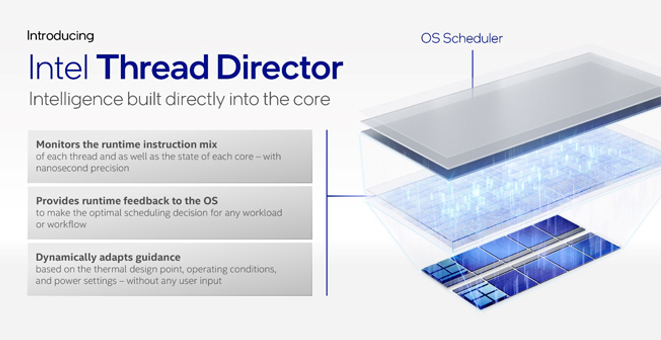The 12th Gen Intel® Core™ Processor ushered in a revolutionary leap forward in x86 processor design with the introduction on Intel’s hybrid architecture that integrates both highly advanced Performance Cores (P-Cores) optimized for single threaded applications and highly advanced Efficiency Cores (E-Cores) optimized for scaling multi-threaded workloads all on one die. This hybrid design has been incorporated in the 12th, and 13th Gen Intel® Core™ Processors, as well as the Intel Core Processor (14th Gen) products for the Ci5, Ci7 and Ci9 families. The combination of these advanced cores dramatically increases performance and performance per watt no matter the application type.
Performance Cores (P-Cores)
Performance Cores are the traditional high Ghz hyperthreaded style we are all familiar with from previous CPU generations which are optimized for high performance single threaded applications. Beginning with the 12th Gen Intel® Core™ Processor, P-Cores are a completely redesigned architecture that includes a 1000GB/s compute fabric that ties the processor clusters as well as the individual cores together, and adds Intel Smart Cache, which shares the L2 and L3 cache among the core clusters to improve cache capacity and reduce latency. Other changes include increasing the out of order scheduler, adding more physical registers, and increasing the execution ports.
Efficient Cores (E-Cores)
The second type of core engineered in Intel’s Hybrid Core Architecture are smaller single threaded (No Hyper Thread Support) efficiency cores or E-Cores. Efficiency cores are a completely redesigned microarchitecture based on Intel’s Atom family of processors to optimize multi-threaded workloads that benefit from more cores rather than higher frequency cores.
Intel Thread Director
The key to successful implementation of a hybrid design is workload management and the determination of which instructions get sent to which core. The advanced intelligent tool that manages this complex process and does it at nanosecond speed is a feature called Intel Thread Director, which is a hardware solution integrated in Intel Hybrid Architecture processors. Intel Thread Director monitors the instruction mix of each thread, provides feedback to the OS to optimize scheduling decisions of the workflow, and dynamically adapts guidance to help the OS assign tasks. Although Intel Thread Director can work with Windows 10, it will have better optimization with Windows 11, making that the ideal OS for a new system.

Cache
With the introduction of Intel’s Hybrid Architecture also came a technically advanced cache structure which depending on processor generation ranges includes up to 36MB of L3 cache that is shared. Additionally, there is up to 2MB L2 cache per P-Core and up to 4MB per E-Core. The additional cache helps keep all the cores fed with data and reduces traffic helping to improve performance and increase IPC.

